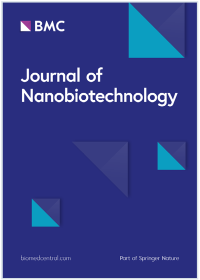Curcumin nanoparticles in heat stroke management
IF 10.6
1区 生物学
Q1 BIOTECHNOLOGY & APPLIED MICROBIOLOGY
引用次数: 0
Abstract
The exacerbation of extreme high-temperature events due to global climate change poses a significant challenge to public health, particularly impacting the central nervous system through heat stroke. This study aims to develop Poly(amidoamine) (PAMAM) nanoparticles loaded with curcumin (PAMAM@Cur) to enhance its therapeutic efficacy in hypothalamic neural damage in a heat stroke model and explore its potential mechanisms. Curcumin (Cur) was encapsulated into PAMAM nanoparticles through a hydrophobic interaction method, and various techniques were employed to characterize their physicochemical properties. A heat stroke mouse model was established to monitor body temperature and serum biochemical parameters, conduct behavioral assessments, histological examinations, and biochemical analyses. Transcriptomic and proteomic analyses were performed to investigate the therapeutic mechanisms of PAMAM@Cur, validated in an N2a cell model. PAMAM@Cur demonstrated good stability, photostability, cell compatibility, significant blood–brain barrier (BBB) penetration capability, and effective accumulation in the brain. PAMAM@Cur markedly improved behavioral performance and neural cell structural integrity in heat stroke mice, alleviated inflammatory responses, with superior therapeutic effects compared to Cur or PAMAM alone. Multi-omics analysis revealed that PAMAM@Cur regulated antioxidant defense genes and iron death-related genes, particularly upregulating the PCBP2 protein, stabilizing SLC7A11 and GPX4 mRNA, and reducing iron-dependent cell death. By enhancing the drug delivery properties of Cur and modulating molecular pathways relevant to disease treatment, PAMAM@Cur significantly enhances the therapeutic effects against hypothalamic neural damage induced by heat stroke, showcasing the potential of nanotechnology in improving traditional drug efficacy and providing new strategies for future clinical applications. This study highlights the outlook of nanotechnology in treating neurological disorders caused by heat stroke, offering a novel therapeutic approach with potential clinical applications.姜黄素纳米颗粒在中暑治疗中的应用
全球气候变化导致极端高温事件加剧,给公共卫生带来了重大挑战,尤其是中暑对中枢神经系统的影响。本研究旨在开发负载姜黄素(PAMAM@Cur)的聚酰胺胺(PAMAM)纳米粒子,以增强其在中暑模型中对下丘脑神经损伤的疗效,并探索其潜在机制。通过疏水相互作用方法将姜黄素(Cur)封装到 PAMAM 纳米颗粒中,并采用多种技术表征其理化性质。建立中暑小鼠模型,监测体温和血清生化指标,进行行为评估、组织学检查和生化分析。为了研究 PAMAM@Cur 的治疗机制,还进行了转录组和蛋白质组分析,并在 N2a 细胞模型中进行了验证。PAMAM@Cur表现出良好的稳定性、光稳定性、细胞相容性、显著的血脑屏障(BBB)穿透能力以及在大脑中的有效蓄积。PAMAM@Cur 显著改善了中暑小鼠的行为表现和神经细胞结构的完整性,缓解了炎症反应,治疗效果优于单独使用 Cur 或 PAMAM。多组学分析表明,PAMAM@Cur能调节抗氧化防御基因和铁死亡相关基因,特别是上调PCBP2蛋白,稳定SLC7A11和GPX4 mRNA,减少铁依赖性细胞死亡。PAMAM@Cur 通过增强 Cur 的给药特性和调节与疾病治疗相关的分子通路,显著提高了对中暑引起的下丘脑神经损伤的治疗效果,展示了纳米技术在改善传统药物疗效方面的潜力,并为未来的临床应用提供了新的策略。这项研究强调了纳米技术在治疗中暑引起的神经系统疾病方面的前景,提供了一种具有潜在临床应用价值的新型治疗方法。
本文章由计算机程序翻译,如有差异,请以英文原文为准。
求助全文
约1分钟内获得全文
求助全文
来源期刊

Journal of Nanobiotechnology
BIOTECHNOLOGY & APPLIED MICROBIOLOGY-NANOSCIENCE & NANOTECHNOLOGY
CiteScore
13.90
自引率
4.90%
发文量
493
审稿时长
16 weeks
期刊介绍:
Journal of Nanobiotechnology is an open access peer-reviewed journal communicating scientific and technological advances in the fields of medicine and biology, with an emphasis in their interface with nanoscale sciences. The journal provides biomedical scientists and the international biotechnology business community with the latest developments in the growing field of Nanobiotechnology.
文献相关原料
| 公司名称 | 产品信息 | 采购帮参考价格 |
|---|
 求助内容:
求助内容: 应助结果提醒方式:
应助结果提醒方式:


